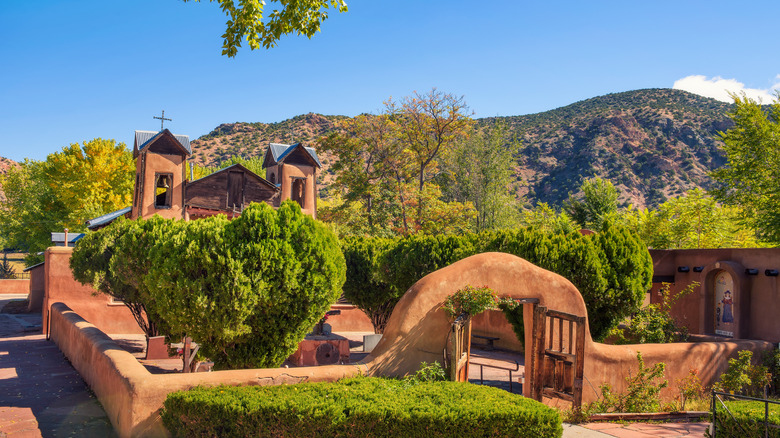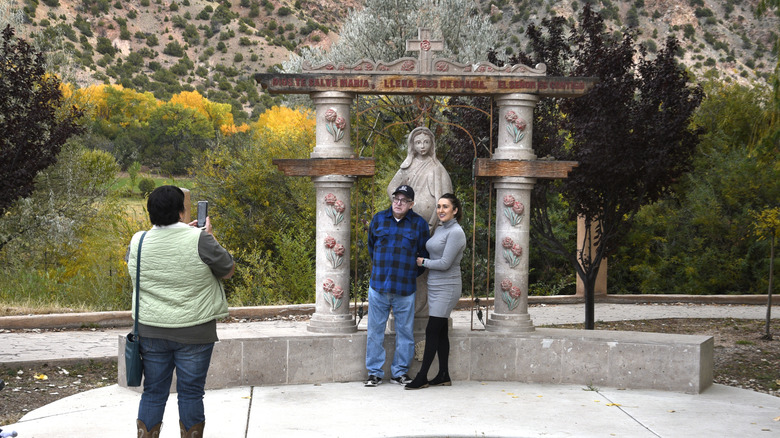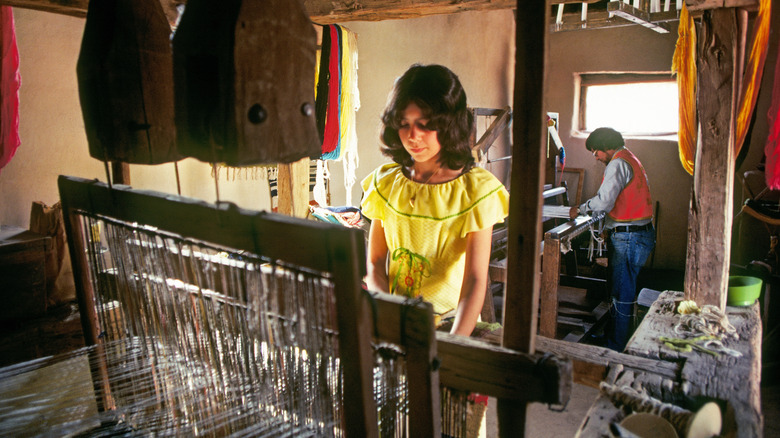Situated Between Santa Fe And Taos Is A Scenic Village Where Tradition Lingers And The Mountains Feel Sacred
Along an undeniably charming New Mexico byway lined with little shops and sights galore that winds through the Sangre de Cristo mountains, travelers will find a small village full of intrigue. Driving along the High Road to Taos, Chimayo lies between two of the state's most prominent cities — roughly an hour southwest of Taos and a mere 30 minutes north of Santa Fe — putting you in the heart of the Land of Enchantment. Here, you'll quickly uncover a tapestry of time-honored traditions and vibrant, authentic culture amid a backdrop of stunning valleys and foothills.
Chimayo has long been home to the Pueblo Indians, even before Spanish conquistadors arrived in the late 1600s and attempted to spread Christianity in the region. In the 1800s, Catholics began attributing sacred attributes to the location. Now, the unincorporated town has become a significant pilgrimage site for contemporary Catholic worshippers, with more than 300,000 visiting the village every year, many in an attempt to experience its therapeutic properties.
Between Chimayo's scenic beauty, everlasting tradition, and magical draw, it's an enticing destination capable of providing travelers with a one-of-a-kind experience. Whether you're seeking spiritual renewal or simply a tranquil escape in the high desert of New Mexico, Chimayo will leave a lasting impression. And it just might heal you, too.
Discover the healing powers of El Santuario de Chimayo
The main reason for Chimayo's designation as a sacred landmark is the alleged healing powers of El Santuario de Chimayo, a historic church found within the village that has become one of America's most visited holy sites. Legend has it that Don Bernardo Abeyta witnessed a bright light beaming out of the ground where El Santuario now stands, digging into the dirt to find a crucifix there. A priest came to get the crucifix and took it back to his church, but the artifact is said to have disappeared, returning once more to its original position in Chimayo.
In 1813, a small chapel was built on the plot of land where the crucifix was found, believing the soil to have healing properties. Three years later, a larger church was erected in its place, and that is the structure that still stands today. Catholics now travel to the village and this specific shrine in an attempt to experience rejuvenation, mixing the dirt below the church with water, then eating it or applying it to the body as a remedy.
The small adobe structure, which draws thousands of people on foot during Holy Week, welcomes visitors with a stunning garden located just inside the property's outer walls. Beyond that, the chapel awaits, with dual bell towers topped by simple crosses. Inside, Native American and Spanish styles merge, with religious murals and decor that offers a truly enthralling sense of place.
Other attractions to uncover in traditional Chimayó, New Mexico
Whether setting out on a pilgrimage to El Santuario or exploring the region to learn about its rich past and persisting cultural heritage, there are many other things to experience during your time in Chimayo. Two local families, the Ortegas and the Trujillos, operate weaving shops passed down through generations that are filled with colorful, hand-crafted blankets, rugs, and clothing items. Additionally, the Trujillo family holds weaving classes at Centinela Traditional Arts. Or experience another form of traditional art with sculptures on display at Oviedo Carvings & Bronze.
Though small in size, Chimayo Museum offers a look back in time with its collection of well-preserved artifacts. Dine at Rancho de Chimayo, a pueblo-style restaurant that captures the spirit of New Mexico and crafts dishes featuring a variety of red chili that is popular in Chimayo. For outdoor adventures and a deeper look at the Pueblo lifestyle, visit nearby Bandelier National Monument.
Venture out further to see more of what the Land of Enchantment has to offer, from White Sands National Park, Albuquerque's annual hot air Balloon Fiesta, and the Continental Divide, to this charming New Mexico getaway that is basically Radiator Springs in real life. To learn more about the village and the pilgrims that visit, travelers can also head to the New Mexico History Museum in Santa Fe, where the "Chimayó: A Tradition of Faith" exhibition will be on display through May of 2027.


